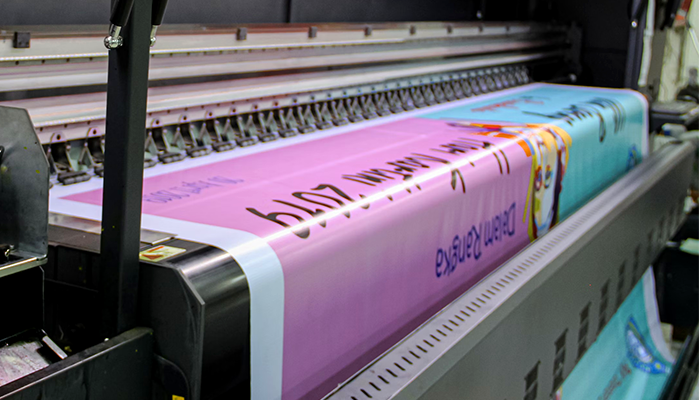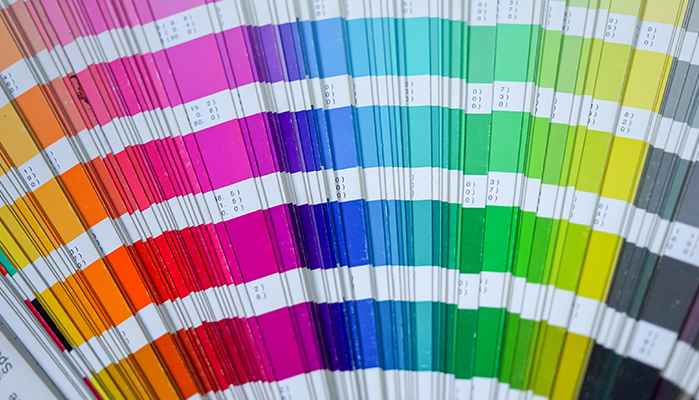DTF Printing vs. Sublimation Printing: What is the Difference?

Table of Contents
- Introduction
- What is DTF Printing?
- What is Sublimation Printing?
- Key Differences Between DTF and Sublimation Printing
- DTF vs. Sublimation vs. Screen Printing
- What Lasts Longer, DTF or Sublimation?
- Can a DTF Printer Be Used for Sublimation?
- Which is Better, DTF or Sublimation? How to Choose?
- FAQs About DTF Printing vs. Sublimation Printing
Introduction
In the world of custom printing, DTF (Direct-to-Film) and sublimation printing have become popular techniques for creating high-quality designs on a wide variety of materials. While both methods serve similar purposes, they are fundamentally different in their processes, applications, and outcomes. Understanding these differences can help businesses and hobbyists choose the right printing method for their specific needs.
This blog dives deep into the distinctions between DTF and sublimation printing, highlighting their advantages, limitations, and ideal use cases.

What is DTF Printing?
DTF printing, or Direct-to-Film printing, involves transferring designs onto a special film that is then heat-pressed onto the desired surface. Here is a breakdown of the process:
How DTF Printing Works
1. Design Preparation: The artwork is created digitally and printed onto a polyethylene terephthalate (PET) film using a specialized printer with textile ink.
2. Powder Application: A heat-melt adhesive powder is applied to the printed design.
3. Curing: The powder is cured using a heat press or curing oven.
4. Heat Transfer: The cured design on the film is heat-pressed onto the desired material.
5. Peeling: After cooling, the film is peeled off, leaving the design on the material.
Advantages of DTF Printing
- Material Versatility: DTF printing works on almost any fabric type, including cotton, polyester, blends, and even non-textile surfaces.
- Vivid Colors: The process produces vibrant, high-resolution designs.
- Durability: Designs are highly resistant to washing and wear.
Limitations of DTF Printing
- Complexity: The process involves multiple steps and specialized equipment.
- Cost: Initial setup and materials can be expensive.
- Time-Consuming: Each print requires careful preparation and execution.

What is Sublimation Printing?
Sublimation printing is a dye-based technique that uses heat and pressure to transfer designs directly into the surface of polyester or polyester-coated items.
How Sublimation Printing Works
1. Design Creation: The design is printed onto sublimation paper using sublimation ink.
2. Heat Transfer: The printed paper is placed on the material, and heat and pressure are applied using a heat press.
3. Dye Sublimation: The heat turns the ink into gas, which penetrates the material's surface and solidifies upon cooling.
Advantages of Sublimation Printing
- Seamless Integration: The design becomes part of the material, ensuring no cracking or peeling.
- Cost-Effective: Ideal for bulk production with minimal waste.
- High Quality: Produces vibrant, photo-realistic images.
Limitations of Sublimation Printing
- Material Restrictions: Only works on white or light-colored polyester fabrics and polyester-coated items.
- Color Limitations: Cannot print white; designs rely on the base color of the material.
Key Differences Between DTF and Sublimation Printing
|
Feature |
DTF Printing |
Sublimation Printing |
|
Material Compatibility |
Works on most fabrics and surfaces |
Limited to polyester and coated items |
|
Durability |
Highly durable and washable |
Very durable, but only for specific materials |
|
Color Quality |
Vivid, with the ability to print white |
Vivid but limited to light-colored bases |
|
Setup Cost |
Higher due to specialized equipment |
Lower for small-scale operations |
|
Ease of Use |
More complex process |
Simpler and quicker |
|
Design Flexibility |
Excellent for intricate and vibrant designs |
Best for full-color designs on specific materials |
DTF vs. Sublimation vs. Screen Printing
1. Direct-to-Film (DTF):
- Process: DTF involves printing a design onto a special film, applying adhesive powder, curing it, and transferring it onto the material using heat and pressure.
- Material Compatibility: Works on a wide variety of fabrics, including cotton, polyester, blends, and even non-fabric materials like leather.
- Color Vibrancy and Complexity: High vibrancy with the ability to handle intricate, multi-color designs.
- Durability: Highly durable, withstanding repeated washes and wear.
- Cost-Effectiveness: Great for small to medium runs but can be more expensive for mass production due to material costs.
2. Sublimation:
- Process: Uses heat to transfer dye into polyester-based materials or specially coated surfaces. The ink transforms into a gas and bonds with the substrate.
- Material Compatibility: Limited to polyester fabrics or coated items like mugs, mousepads, and phone cases.
- Color Vibrancy and Complexity: Produces highly vibrant, photo-quality designs with seamless integration into the substrate.
- Durability: Extremely durable but restricted to polyester items.
- Cost-Effectiveness: Ideal for small batches or unique, high-detail projects on polyester.
3. Screen Printing:
- Process: Involves creating a stencil (screen) and applying layers of ink directly onto the material through the screen.
- Material Compatibility: Works on a broad range of materials, from fabrics to paper and wood.
- Color Vibrancy and Complexity: Best for simple designs with few colors. Complex designs may require multiple screens, reducing efficiency.
- Durability: Inks are long-lasting, but quality depends on the ink and technique used.
- Cost-Effectiveness: Most cost-effective for large batches, as setup costs are significant but reduce per-unit costs at scale.
What Lasts Longer, DTF or Sublimation?
- DTF:
- Retains its design and vibrancy on a wide variety of materials, including natural fibers like cotton.
- Durable against repeated washes, stretching, and wear.
- Adhesive layer strengthens the bond between the design and the fabric.
- Sublimation:
- Extremely long-lasting on polyester surfaces because the dye integrates directly with the material.
- Limited to polyester-based items, which restricts its versatility compared to DTF.
In general, DTF offers broader durability across various materials, whereas sublimation’s longevity excels on polyester-specific products.
Can a DTF Printer Be Used for Sublimation?
- Technical Differences:
- DTF printers use specialized pigment inks that adhere to the film and transfer to fabrics using adhesive powder.
- Sublimation requires dye-based inks that convert to gas under heat, bonding chemically with polyester.
- Equipment Incompatibility:
- Printer heads, ink formulations, and heat requirements are distinct for each method.
- Attempting to use one printer for both methods can damage the machine and ruin the final output.
To perform both methods, invest in separate printers designed for each specific process.
Which is Better, DTF or Sublimation? How to Choose?
- DTF Advantages:
- Works on a variety of fabrics and materials, including dark-colored and natural fibers.
- Produces highly detailed, vibrant prints with no restriction on material base.
- Best for projects requiring versatility in materials and high durability.
- Sublimation Advantages:
- Delivers superior, seamless designs on polyester items.
- Ideal for creating vibrant, photorealistic prints.
- Excellent for items like sportswear, mugs, and promotional products.
The better option depends on the project. For diverse material needs, choose DTF. For polyester-focused, high-detail designs, choose sublimation.
The choice between DTF and sublimation printing largely depends on your specific requirements:
- Use DTF Printing If:
- You need versatility in material choices.
- You’re printing on dark or non-polyester fabrics.
- Durability and color vibrancy are crucial.
- Use Sublimation Printing If:
- You are printing on light-colored polyester or coated materials.
- Seamless, high-quality images are a priority.
- Cost efficiency for bulk orders is essential.
FAQs About DTF Printing vs. Sublimation Printing
How long does a DTF print last on a shirt?
A properly applied DTF print can last for years, often outlasting the shirt itself. The durability depends on factors such as the quality of the adhesive, the printing process, and proper care. To maximize longevity, wash the garment inside out with cold water and avoid high-heat drying.
Can you use DTF on tumblers?
No, DTF printing is primarily designed for fabrics and not suitable for hard surfaces like tumblers. For tumblers, sublimation printing is a better option as it can bond directly to specially coated surfaces.
Does DTF peel off?
DTF prints are highly durable and designed to withstand peeling when properly applied. However, improper application (e.g., insufficient heat, pressure, or curing time) or low-quality materials may lead to peeling over time. Ensure the process follows recommended guidelines for optimal results.
Can I use DTF prints on cups?
DTF prints are not suitable for cups or other hard, non-porous surfaces. Sublimation printing is more appropriate for such items as it creates a permanent bond with specially coated surfaces.
Can you DTF on black shirts?
Yes, DTF works exceptionally well on black shirts and other dark-colored fabrics. The white ink layer in DTF printing ensures that designs remain vibrant and visible on dark materials.
Best Way to Cut Out Images for DTF Prints
For DTF prints, precision is key. Using a high-quality cutter or plotter can ensure clean edges. It’s also important to align the design properly to avoid any mismatches during the transfer process.
Start your borderless business here
Tell us about your business and stay connected.
Keep up with the latest from Chovm.com?
Subscribe to us, get free e-commerce tips, inspiration, and resources delivered directly to your inbox.















